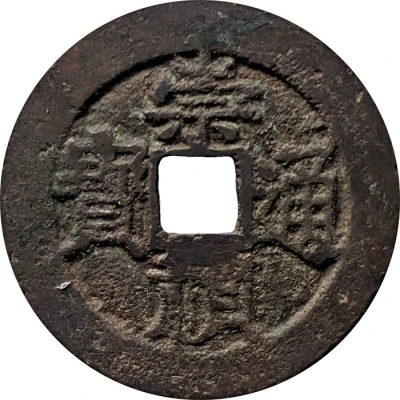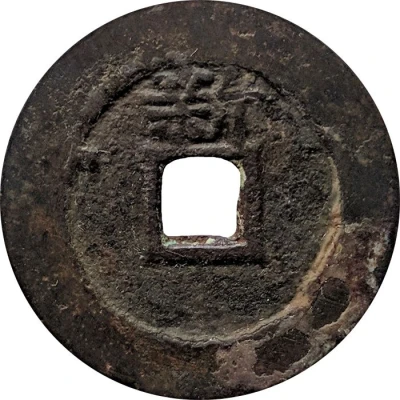1 Cash - Chongzhen Tongbao; southern type; Gong - type 2 ND
| Brass | - | 25 mm |
| Issuer | Empire of China |
|---|---|
| Emperor | Ming dynasty › Chongzhen (崇祯帝) (1627-1644) |
| Type | Standard circulation coin |
| Years | 1630-1644 |
| Value | 1 Cash |
| Currency | Cash (621-1912) |
| Composition | Brass |
| Diameter | 25 mm |
| Shape | Round with a square hole |
| Technique | Cast |
| Orientation | Medal alignment ↑↑ |
| Demonetized | Yes |
| Updated | 2024-10-03 |
| Numista | N#222952 |
|---|---|
| Rarity index | 100% |
Reverse
One Chinese ideogram below.
Script: Chinese (traditional, regular script)
Lettering: 共
Translation:
Gong
Gongqing (mint)
Edge
Plain
Comment
Hartill suggests the larger, heavier coins (around 26 millimetres and weighing 1.3 Qian) were the first 1 Cash pieces produced. By 1630, coins minted in the north weighted 1.0 Qian and coins minted in the south weighed 8 Fen or less.The Northern types and the Southern types are differenciated by the left part of Zhen.
- Northern types: 礻
- Southern types: 示
Interesting fact
One interesting fact about the Standard circulation coin 1 Cash - Chongzhen (Tongbao; southern type; Gong - type 2) ND (1630-1644) from Empire of China made of Brass is that it was used as a form of currency during a time of great economic change in China. The Chongzhen era saw the introduction of a new monetary system, and the use of coins like this one helped to facilitate trade and commerce across the empire. Despite being made of brass, which was a less valuable material than other metals used in coinage at the time, the coin was still widely accepted and used in everyday transactions. This speaks to the resourcefulness and adaptability of the Chinese people during a time of economic transformation.

